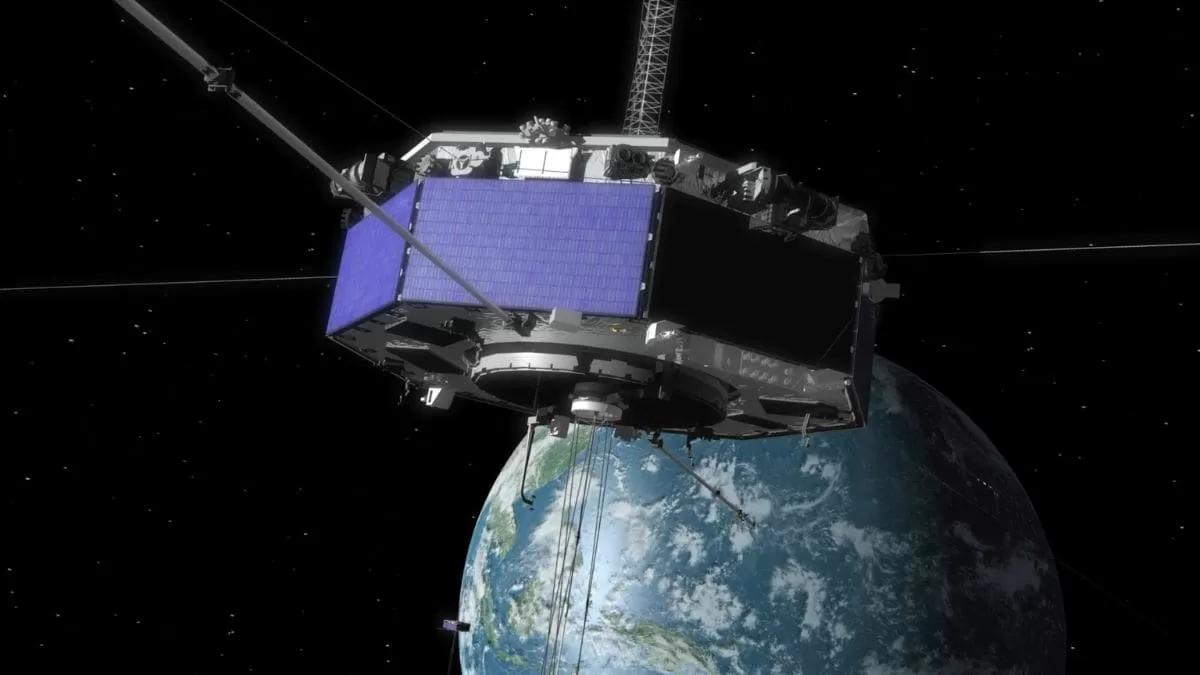NASA’s Magnetospheric Multiscale (MMS) mission has been at the forefront of space exploration for the past decade, continuously pushing the boundaries of our understanding of magnetic reconnection. This crucial process, which occurs when magnetic fields collide and release large amounts of energy, is essential to the study of space physics. The four-satellite fleet, equipped with state-of-the-art technology, has enabled over 1,500 research papers, refining theories and revealing unexpected reconnection locations. As the MMS mission celebrates its 10th anniversary, it is clear that it has made significant contributions to the field of space science.
Launched in 2015, the MMS mission was designed to study magnetic reconnection in Earth’s magnetosphere, the region surrounding our planet that is influenced by its magnetic field. This phenomenon has been observed in various other astrophysical systems, such as the Sun and other planets, making it a crucial area of research. The MMS mission has provided scientists with unprecedented observations of magnetic reconnection, allowing them to refine existing theories and develop new ones.
One of the key achievements of the MMS mission has been its ability to capture high-resolution images of magnetic reconnection in action. This has provided scientists with a detailed understanding of the process, which was previously only theorized. The four satellites, flying in a tight formation, have been able to capture the 3D structure of magnetic reconnection events, providing a wealth of data for researchers to analyze. This has led to the publication of over 1,500 research papers, making the MMS mission one of the most prolific in NASA’s history.
The MMS mission has also led to unexpected discoveries, challenging existing theories and opening new avenues for research. One such discovery was the observation of magnetic reconnection in a region of the magnetosphere known as the magnetopause. This boundary, where Earth’s magnetic field meets the solar wind, was previously thought to be too turbulent for magnetic reconnection to occur. However, the MMS mission has shown that this is not the case, leading to a better understanding of the dynamics of the magnetopause.
In addition to its scientific achievements, the MMS mission has also set records for GPS tracking at extreme altitudes. The four satellites, flying in a pyramid formation, have been able to maintain a distance of just six miles between each other while traveling at speeds of over 22,000 miles per hour. This precise formation flying has allowed the MMS mission to capture detailed images of magnetic reconnection events, providing scientists with unprecedented insights into this fundamental process.
The success of the MMS mission would not have been possible without the collaboration of multiple institutions and agencies. NASA’s Goddard Space Flight Center, the European Space Agency, the Japan Aerospace Exploration Agency, and the Canadian Space Agency all played a crucial role in the development and execution of the mission. This international collaboration has enabled the MMS mission to achieve its goals and make groundbreaking discoveries.
As the MMS mission enters its second decade, it continues to provide scientists with valuable data and insights into magnetic reconnection. The four satellites are still fully operational and continue to observe this phenomenon in the magnetosphere. With the addition of new instruments and technologies, the MMS mission is expected to make even more significant contributions to the field of space physics in the years to come.
In conclusion, NASA’s Magnetospheric Multiscale (MMS) mission has completed a decade of groundbreaking discoveries, advancing our understanding of magnetic reconnection and its role in space physics. The four-satellite fleet has enabled over 1,500 research papers, refining theories and revealing unexpected reconnection locations. The mission has also set records for GPS tracking at extreme altitude, showcasing the capabilities of modern space technology. As we look towards the future, the MMS mission promises to continue its legacy of pushing the boundaries of scientific research and expanding our knowledge of the universe.

